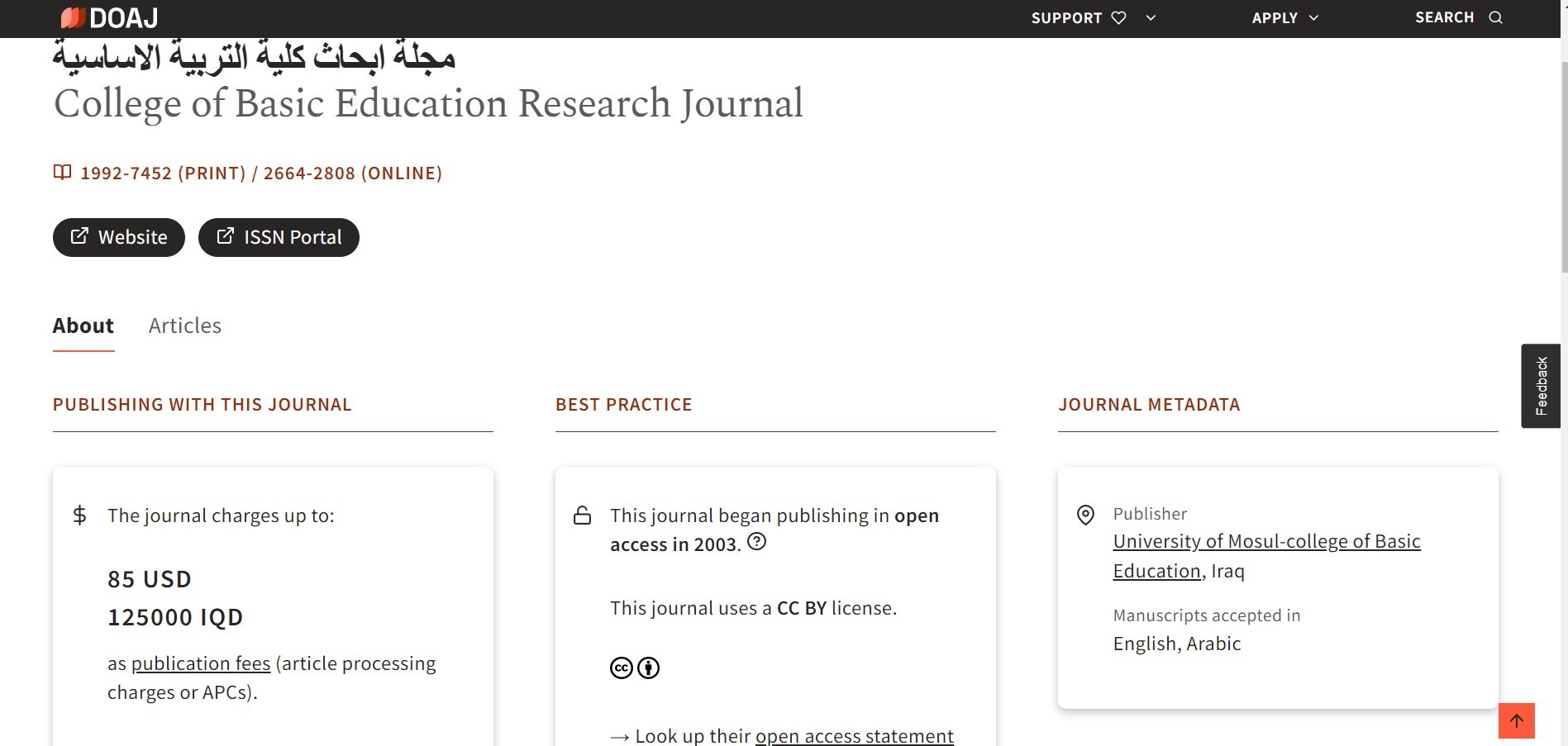Isolation and diagnosis of Candida species from the oral cavity of children with candidiasis in the city of Mosul
Abstract
The study was conducted in the laboratories of postgraduate studies in the College of Education for Girls / University of Mosul. This study involved collecting 92 mouth samples from children hospitalized in Mosul (Al-Salam Education and Ibn Al-Atheer) whose infection was diagnosed by specialist doctors during the period from 1/6/2022 to 5/10/2022. The samples were examined microscopically after being treated with potassium hydroxide solution, then cultured on saproid dextrose agar SDA medium and diagnosed microscopically and visually. The isolation results showed that the infection rate of candidiasis was 70.65% positive for transplantation, and the age groups studied from (0-12) months were the most infected age groups with a rate of 35.87%. Through our study, we concluded that the yeast isolates that were positive for germ tube formation belonged to the Candida albicans species without further diagnostic tests. Furthermore, the chlamydospore formation assay for both Candida albicans and Candida dubliniensis determined that HI Chrome differential medium distinguished between Candida species based on colony color, with C. albicans appearing bright green, Candida tropicalis colonies appearing metallic blue, while Candida krusei colonies appeared purple in color, and colonies of Candida glabrata were creamy to light pink.



